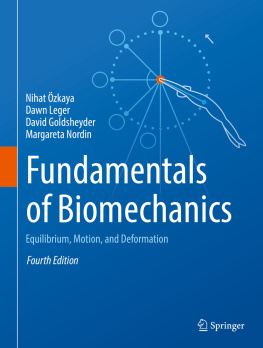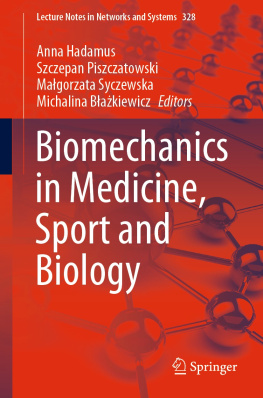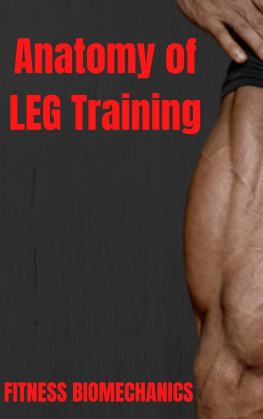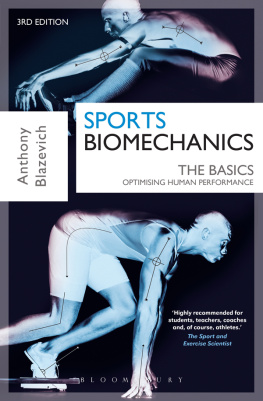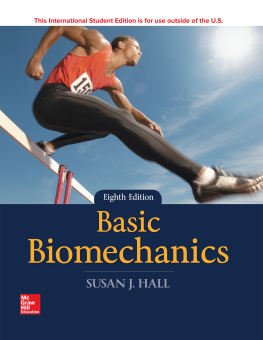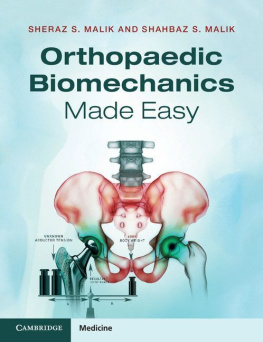Nihat Г–zkaya - Fundamentals of Biomechanics
Here you can read online Nihat Г–zkaya - Fundamentals of Biomechanics full text of the book (entire story) in english for free. Download pdf and epub, get meaning, cover and reviews about this ebook. year: 0, publisher: Springer International Publishing, genre: Children. Description of the work, (preface) as well as reviews are available. Best literature library LitArk.com created for fans of good reading and offers a wide selection of genres:
Romance novel
Science fiction
Adventure
Detective
Science
History
Home and family
Prose
Art
Politics
Computer
Non-fiction
Religion
Business
Children
Humor
Choose a favorite category and find really read worthwhile books. Enjoy immersion in the world of imagination, feel the emotions of the characters or learn something new for yourself, make an fascinating discovery.
- Book:Fundamentals of Biomechanics
- Author:
- Publisher:Springer International Publishing
- Genre:
- Year:0
- Rating:5 / 5
- Favourites:Add to favourites
- Your mark:
- 100
- 1
- 2
- 3
- 4
- 5
Fundamentals of Biomechanics: summary, description and annotation
We offer to read an annotation, description, summary or preface (depends on what the author of the book "Fundamentals of Biomechanics" wrote himself). If you haven't found the necessary information about the book — write in the comments, we will try to find it.
Fundamentals of Biomechanics — read online for free the complete book (whole text) full work
Below is the text of the book, divided by pages. System saving the place of the last page read, allows you to conveniently read the book "Fundamentals of Biomechanics" online for free, without having to search again every time where you left off. Put a bookmark, and you can go to the page where you finished reading at any time.
Font size:
Interval:
Bookmark:


This Springer imprint is published by Springer Nature
The registered company is Springer International Publishing AG
The registered company address is: Gewerbestrasse 11, 6330 Cham, Switzerland
Biomechanics is a discipline utilized by different groups of professionals. It is a required basic science for orthopedic surgeons, neurosurgeons, osteopaths, physiatrists, rheumatologists, physical and occupational therapists, chiropractors, athletic trainers and beyond. These medical and paramedical specialists usually do not have a strong mathematics and physics background. Biomechanics must be presented to these professionals in a rather nonmathematical way so that they may learn the concepts of mechanics without a rigorous mathematical approach.
On the other hand, many engineers work in fields in which biomechanics plays a significant role. Human factors engineering, ergonomics, biomechanics research, and prosthetic research and development all require that the engineers working in the field have a strong knowledge of biomechanics. They are equipped to learn biomechanics through a rigorous mathematical approach. Classical textbooks in the engineering fields do not approach the biological side of biomechanics.
Fundamentals of Biomechanics (Fourth Edition) approaches biomechanics through a rigorous mathematical standpoint while emphasizing the biological side. This book will be very useful for engineers studying biomechanics and for medical specialists enrolled in courses who desire a more intensive study of biomechanics and are equipped through previous study of mathematics to develop a deeper comprehension of engineering as it applies to the human body.
Significant progress has been made in the field of biomechanics during the last few decades. Solid knowledge and understanding of biomechanical concepts, principles, assessment methods, and tools are essential components of the study for clinicians, researchers, and practitioners in their efforts to prevent musculoskeletal disorders and improve patient care that will reduce related disability when they do occur.
This work was prepared in a combined clinical setting at the New York University Hospital for Joint Diseases Orthopedic Institute and teaching setting within the Program of Ergonomics and Biomechanics at the Graduate School of Arts and Science, New York University. The authors of this volume have the unique experience of teaching biomechanics in a clinical setting to professionals from diverse backgrounds. This work reflects their many years of classroom teaching, rehabilitation treatment, and practical and research experience.
Fundamentals of Biomechanics has been translated into three languages (Greek, Japanese, and, coming soon, Italian) and has contributed to many discussions in the field to advance biomechanical knowledge.
Biomechanics is an exciting and fascinating specialty with the goal of better understanding the musculoskeletal system to enable the development of methods to prevent problems or to improve treatment of patients.
Biomechanics has increasingly become an interdisciplinary field where engineers, physicists, computer scientists, biologists, and material scientists work together to support physicians, sports scientists, ergonomists, and physiotherapists and many other professionals.
This book Fundamentals of Biomechanics summarizes the basics of mechanics, both static and dynamics including kinematics and kinetics. The book introduces vectors and moments, applying them with many simple examples, which are essential to determine quantitatively or at least estimate loads acting during different situations or exercises on bones and joints. Joints and bones are mostly stabilized by their associated ligaments and muscles and therefore such calculations also require knowledge of the complex anatomy. Creativity is also needed to simplify these often complicated scenarios to reduce the parameters for the free body diagrams that can be used to develop the equations that can be solved. This book presents the concepts and explains in detail examples for the elbow, the shoulder, the spinal column, the neck, the lumbar spine, the hip and the knee, as well as the ankle joint. The reader however should also be aware that results from such calculations should be validated with available in vivo studies because muscle forces are often not known and the simplifications may be too strong.
The book also explains stress and strain relations, which can cause the failure of structures. The differences between the mechanical properties of hard and soft biological tissues are presented. The beauty of biomechanics is that mechanics can be applied to biological tissues to explain healing or degenerative processes. This knowledge is important to better understand what happens on the cellular level of these tissues and to explain remodeling processes in these structures. In order to move deeper into biological applications other books may also be recommended; some of these can be found in the suggested readings following specific chapters. This book may also serve as reference when notations or definitions or units are not clear.
One of the most important unique features that should be emphasized is the fact that each chapter contains exercise problems and detailed solutions that help to practice the concepts via many examples. Therefore this book should not only be recommended to students but also to professors who teach biomechanics. People from other disciplines like normal engineers or physicists are often asked to teach biomechanics for example to physiotherapists. For these professionals, this book may serve as a valuable source for their own preparation.
Font size:
Interval:
Bookmark:
Similar books «Fundamentals of Biomechanics»
Look at similar books to Fundamentals of Biomechanics. We have selected literature similar in name and meaning in the hope of providing readers with more options to find new, interesting, not yet read works.
Discussion, reviews of the book Fundamentals of Biomechanics and just readers' own opinions. Leave your comments, write what you think about the work, its meaning or the main characters. Specify what exactly you liked and what you didn't like, and why you think so.

